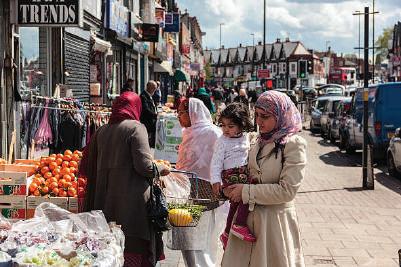
3 minute read
Introduction
Violence against women and girls (VAWG) is a global issue that affects women and girls from different backgrounds, faiths, and races. According to the United Nations, one in three women experience physical or sexual violence in their lifetime - mostly by an intimate partner1 .
In recent years, there has been an increased focus on Muslims and the Muslim faith. We have seen a number of Islamophobic attacks across North America as well as greater scrutiny on Muslim women in our communities. Furthermore, with the #MeToo movement, there is now an international discussion on violence against women and girls in general.
As noted, VAWG affects every community, religion and race. This manual recognizes this and doesn’t seek to single out a particular religion for gratuitous purposes. Rather, it is a sincere attempt to understand Islam’s real approach to VAWG issues - an understanding that is divested from any cultural, sectarian or cultural accretions that may have been added over the centuries.
My research in this area of work has found that some mainstream Muslim interpretations of Quranic verses and reported Prophetic traditions are misunderstood and misconstrued to justify violence against women and girls.
For example, throughout North America there have been cases where Imams and community leaders have encouraged Muslim women to go back to their abusers in order to ‘work on the relationship’ or ‘keep the family together at all costs’ . There is also often an undue apportioning of blame upon the wife if there is a marital dispute with the blame being based upon a presumption that she has somehow displeased her husband.
In parts of the Muslim world, especially within fundamentalist movements, we have seen Muslim women being stoned for adultery or punished for being raped or refusing to enter into a forced marriage.
In addition to the violence that women are subjected to during times of peace, women are especially vulnerable during times of war. In refugee camps around Lebanon and Jordan, there have been reported incidences of ‘temporary marriages’ of girls as young as twelve with men as old as fifty. Misinterpreted Quranic verses and Prophetic traditions are used by the perpetrators and the community to justify such acts. The organizations that attempt to address VAWG issues often fail to explore the specific and traditional religious validations that are used to justify these practices. Often, Muslim organizations offer bland general statements against VAWG that appear more like political clichés than anything stated with real conviction - supported by a well-worn theological quote or two.

This does little in terms of reassuring and educating either Muslim women (or men) - or, indeed, the general public, as to the real position of Islam and the Quran on such matters.

This manual seeks to take a small step in addressing this gap by making valid theological counter-responses to VAWG practices in a format that is readily available and easy to read - especially for women and girls.
Responding to the absence of such a resource for women and girls is what this project aims to achieve. The manual attempts to explore some of these religious justifications in detail 2 - providing a context and understanding to the Muslim community and beyond - so that any false justifications can be put to rest if appropriate. The manual also seeks to be a resource to those working in the VAWG field so
Ultimately, the spirit and approach of the manual is one which follows a central Quranic dictate which states:
And God Knows best.

they they are able to offer explanations and address these issues effectively.
“O you who believe! Be steadfast maintainers of justice, witnesses for God, though it be against yourselves, or your parents and kinsfolk, and whether it be someone rich or poor, for God is nearer unto both. So follow not your caprice, that you may act justly. If you distort or turn away, truly God is Aware of whatsoever you do.” (4:135)
2 The topics covered in this manual are Female Genital Mutilation, Domestic Violence, Early/Forced Marriages, Hijab and Niqab.






